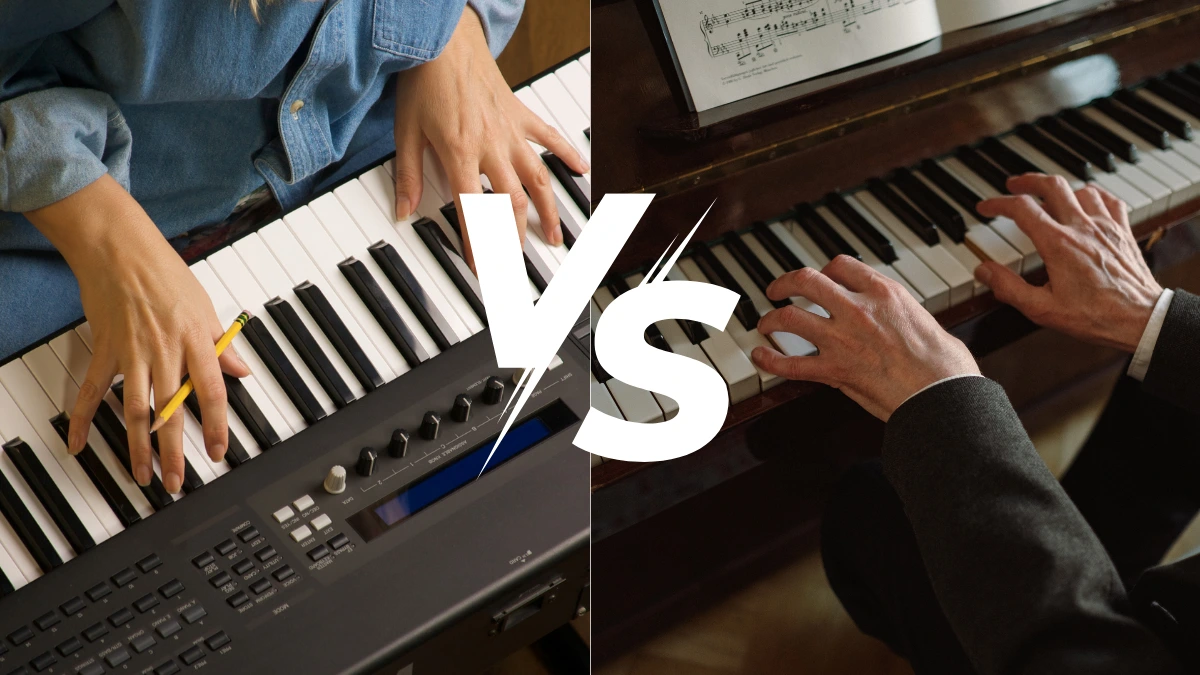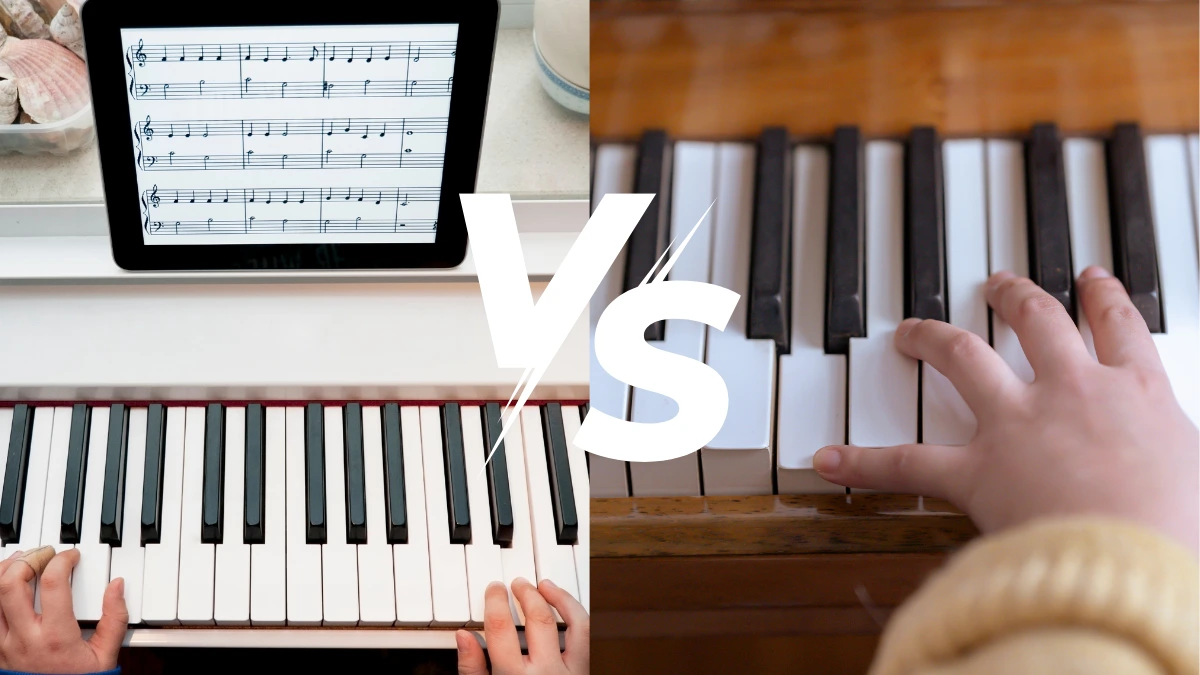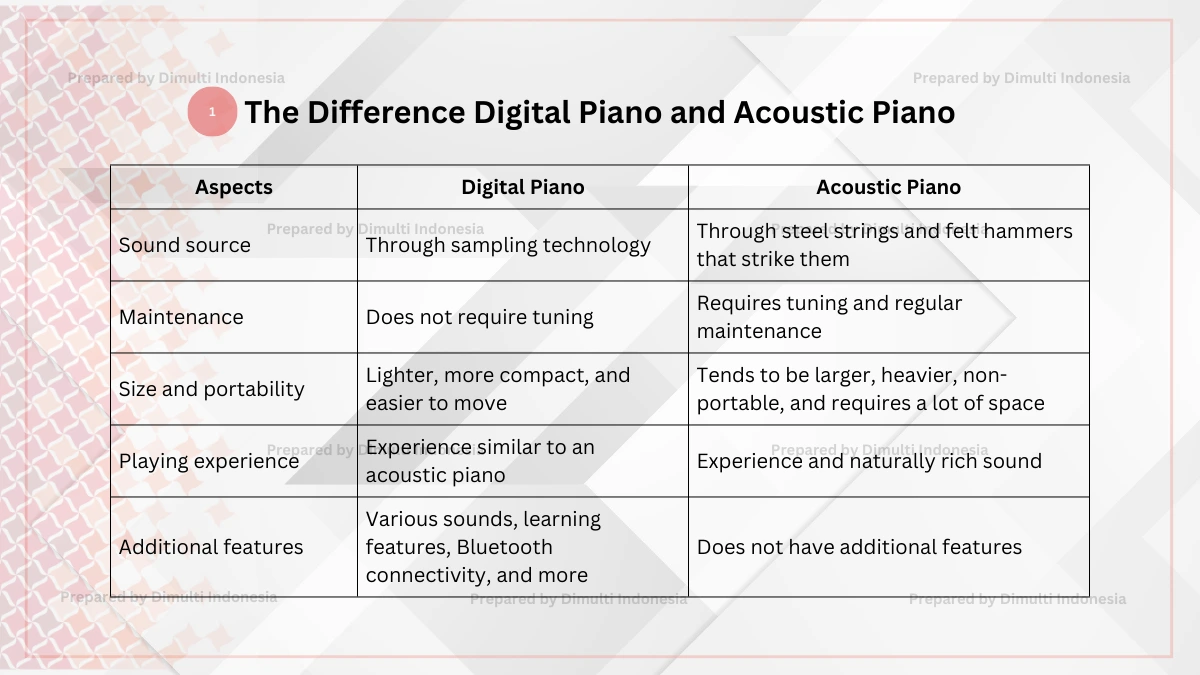Digital pianos and acoustic pianos are mechanical musical instruments that produce beautiful sounds. Although both maximize your music, the digital piano and acoustic piano have some significant differences.
The differences between digital piano and acoustic piano include sound source, maintenance, size and portability, playing experience, and additional features.
This article will delve into the important differences between digital piano and acoustic piano to maximize your music.
What is a Digital Piano?

A digital piano is an electronic musical instrument designed as an alternative to acoustic pianos. The sound source of this piano is not produced from the vibration of wooden boards through steel strings struck by hammers connected to keys, but rather from sampling or sound synthesis technology stored in internal memory.
For musicians who want a highly portable device that can be easily taken anywhere, a digital piano is the right choice. With this device, you can practice without disturbing others using the headphone output. Using this piano is also made easier because it does not require routine maintenance such as tuning.
What is an Acoustic Piano?

An acoustic piano is a traditional instrument that produces sound mechanically. This musical instrument works by pressing keys, which then move hammers to strike metal strings. The instrument then resonates on a wooden soundboard and produces a pure sound with a high dynamic range.
Unlike digital pianos, acoustic pianos rely on physical mechanisms to produce sound. These instruments also require maintenance, such as tuning, to maintain their sound quality.
The Difference Between Digital Piano and Acoustic Piano?

Digital pianos and acoustic pianos are both mechanical musical instruments that produce beautiful sounds. Here are five differences between digital piano and acoustic piano:
1. Sound source
Digital piano: Has a sound source through sampling technology to record and play high-quality acoustic piano sounds through speakers or headphones.
Acoustic piano: Has a sound source through steel strings and felt hammers that strike them. The device then vibrates the wooden soundboard to amplify the sound.
2. Maintenance
Digital piano: Does not require tuning because it does not have strings or mechanical components that are prone to wear and tear.
Acoustic piano: Requires tuning and regular maintenance due to its moving mechanical components.
3. Size and portability
Digital piano: Lighter, more compact, and easier to move.
Acoustic piano: Tends to be larger, heavier, non-portable, and requires a lot of space.
4. Playing experience
Digital piano: Provides an experience similar to an acoustic piano.
Acoustic piano: Provides an authentic experience and naturally rich sound.
5. Additional features
Digital piano: Has additional features such as volume control, various sounds, learning features, Bluetooth connectivity, and more.
Acoustic piano: Does not have additional features.
That’s the difference between digital piano and acoustic piano that you can consider when choosing according to your personal needs.
If you want to have an experience similar to playing an acoustic piano in terms of both sound and feel, a digital piano is a good choice. However, if you want to have the authentic sound, you can choose a digital piano.